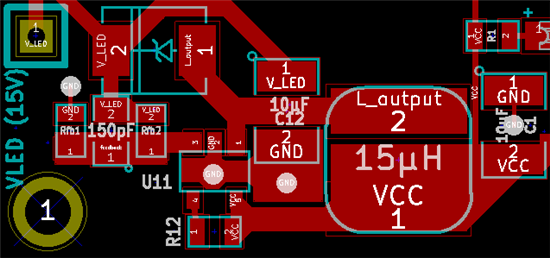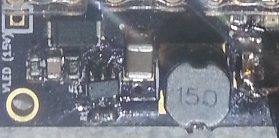I'm using the LMR62421 to boost a 3-5V input up to 15V to run a string of LEDs. While it's a great solution when it works, I've been having them burn out on me on a frequent basis, and I can't figure out why. The standard failure mode is that while all of the inputs are where I expect, the chip simply stops switching (as confirmed by scope on the SW pin).
I'd been thinking that somehow the changing weather had caused me to damage the chips via ESD, but after the most recent one I don't think that's the case: I had the completed board sitting on a wooden surface with a 5V power supply. I checked for about an hour that it was working properly over an output current range of about 5-120mA, then left the board powered on a very low standby draw for several hours, after which it was still working fine. I then left it overnight and checked the next morning, at which point the chip was dead. The control IC on the board still talks, and the high-side output is still connected at about Vin, just as if the chip were in shutdown mode, but EN is pulled high by a hard-wired resistor. I don't think that temperature could have been an issue, and the load on the system was trivial.
I've seen this failure mode a few times now, and I've been able to repair the boards by replacing the IC, but I can't figure out what keeps causing them to burn out. I'd appreciate any troubleshooting pointers.
The layout is mostly cribbed from the demo board, and the external component selection was taken from WEBENCH, with the exception of a beefier input capacitor, which also serves as transient protection in conjunction with an upstream protection chip. The schematic is verbatim copy-and-paste from WEBENCH (equivalent to boost design examples 1-3).



